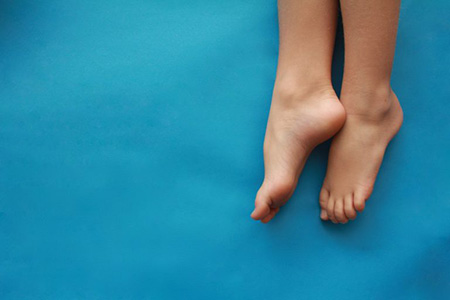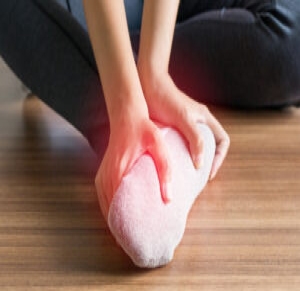Between your heel and the front of your foot, there is a piece of fascia that connects these two sections. This is the plantar fascia. When the plantar fascia becomes inflamed or hardens, it can cause pain. In some cases, the pain goes away quickly, however, it can also become a chronic condition that seriously affects your lifestyle.
Here is how you can recognize Plantar Fasciitis.
Plantar Fasciitis: Symptoms
In most cases, plantar fasciitis includes a stabbing pain in your heel. Sometimes the pain can move closer to the midsection of your foot (near your arch). Those experiencing it usually describe the pain as shooting or stabbing.
Pain caused by plantar fasciitis can be very intense in the morning and after staying off your feet for several hours. Stairs can become challenging due to this pain. Usually, the pain reduces and sometimes wholly disappears during regular daily activities, only to come back after the feet and the muscles “cool off” after an activity.
In some cases, plantar fasciitis vanishes even without medical attention. For others, it can be solved with appropriate treatments, while there is a significant group of people who have it as a chronic condition and only attempt to soothe the symptoms.
Plantar Fasciitis: Causes
Some people seem to be at a higher risk of developing plantar fasciitis than others. These include:
- Seniors
- Obese people
- Runners
- Women between 40-70 years of age
- Professions that require prolonged periods of standing
- Women in the later stages of pregnancy
Also, it seems that those who have flat feet, bone spurs, or tight calves will most likely develop plantar fasciitis. It is difficult to determine a single reason for this occurrence, mostly because plantar fasciitis may be a result of a combination of factors.

Plantar Fasciitis: Treatments
The course of your treatments depends on the severity of your pain and how long it has been present. If your pain is bearable and just recent, the first thing you should do is rest your feet and apply ice to soothe the pain and inflammation.
It many cases, your regular NSAID and anti-inflammatory medicine that you already have in your home will help you with your pain. Use them according to the instructions and rest your feet. You can still apply ice for immediate release.
If you feel your pain requires attention from a medical professional, this is what you can expect:
Physical exam: Your doctor will probably check your feet for swelling and redness. They might ask you to tighten your foot while they press on your plantar fascia to see if that is really the cause of your pain.
Physical therapy: In some cases, physical therapy is effective. The goal of this therapy is to stretch the fascia and Achilles tendon while strengthening the muscles. In that way, your fascia should become more flexible, and the muscles can take over some of the pressure that the fascia suffers.
Corticosteroid injection: Your doctor will probably use ultrasound to lead the needle into your foot and directly to the fascia. The corticosteroid injection should help you recuperate and soothe the pain.
Surgery: This surgery involves disconnecting fascia from the heel. This is the last resort because it can compromise the functionality of your foot.
It is better to prevent plantar fasciitis than to treat it. You can do that with simple lifestyle changes, such as avoiding spending hours on your feet, choosing proper footwear, and changing your athletic footwear every 400 miles.






